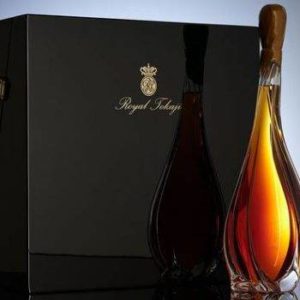You must try the special royal Hungaricum: Tokaj!

In his article in The Article Giles Macdonogh, recalls his experience at Tokaj hill, meeting Hugh Johnson, the owner of Royal Tokaj and enjoying the fantastic wine which is also a hungaricum. He shares personal experiences and talks about the history of Tokaj, some of which I have highlighted here.
We know Tokaji chiefly as a luscious sweet Hungarian wine created by adding “puttony” or 27-litre hods of super-sweet, shrivelled, nobly rotten fruit (pictured) to a 136-litre barrel of base wine called a “gönci” cask. This is “Aszú”, once the standard tipple of central European emperors, kings and princes when such people still roamed the earth. Aszú is made in appreciable quantities every four or five years or so, and in the vintages in between drinkers have to make do with late harvest wines, “Szamorodni” (which can be sweet or dry) or dry Tokaji.

It is not surprising that many of the best dry (and sweet) Tokajis come from the “crus” or growths that were classified in the eighteenth century, like Szent Tamás, Betsek, Mezes Maly or Király. Istvan Szepsy was the Tokaji grower who took the wine out of the darkness of the Communist years and introduced the new era to the region. His wines have been consistently great. His best dry wines come from Urágya and Szent Tamás.
The best recent years for Aszú wines have been 2008 and 2013. From Hétszölö there was a superb 2008, while 2013 produced sensational Puttonyos wines from Dobogo and Grand Tokaj. Some houses manage to make Aszu wines in off vintages: the 2015 from Zsirai is a case in point: leather, cream, honey and baked apples; or the British-owned house of Royal Tokaj which made an opulent Aszu in 2016. For most growers, however, 2017 will be the next taxi off the rank.
The standard grape in the Tokaj Hills is Furmint, which is sometimes blended with Harslevelu or with yellow Muscat. Furmint can be fiendishly acidic, but over the years, and in many cases as a result of the softening of the acidity by secondary, malolactic fermentation (or possibly warmer summers?), the wine has become a great deal more palatable. It is now a sappy white wine with the body to grace any table.
Source: thearticle.com





